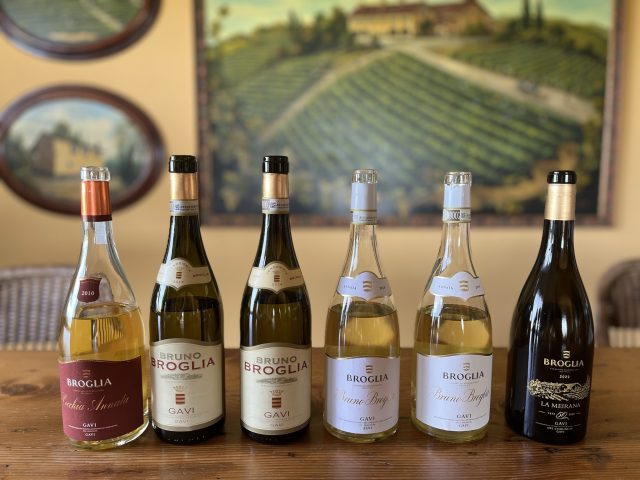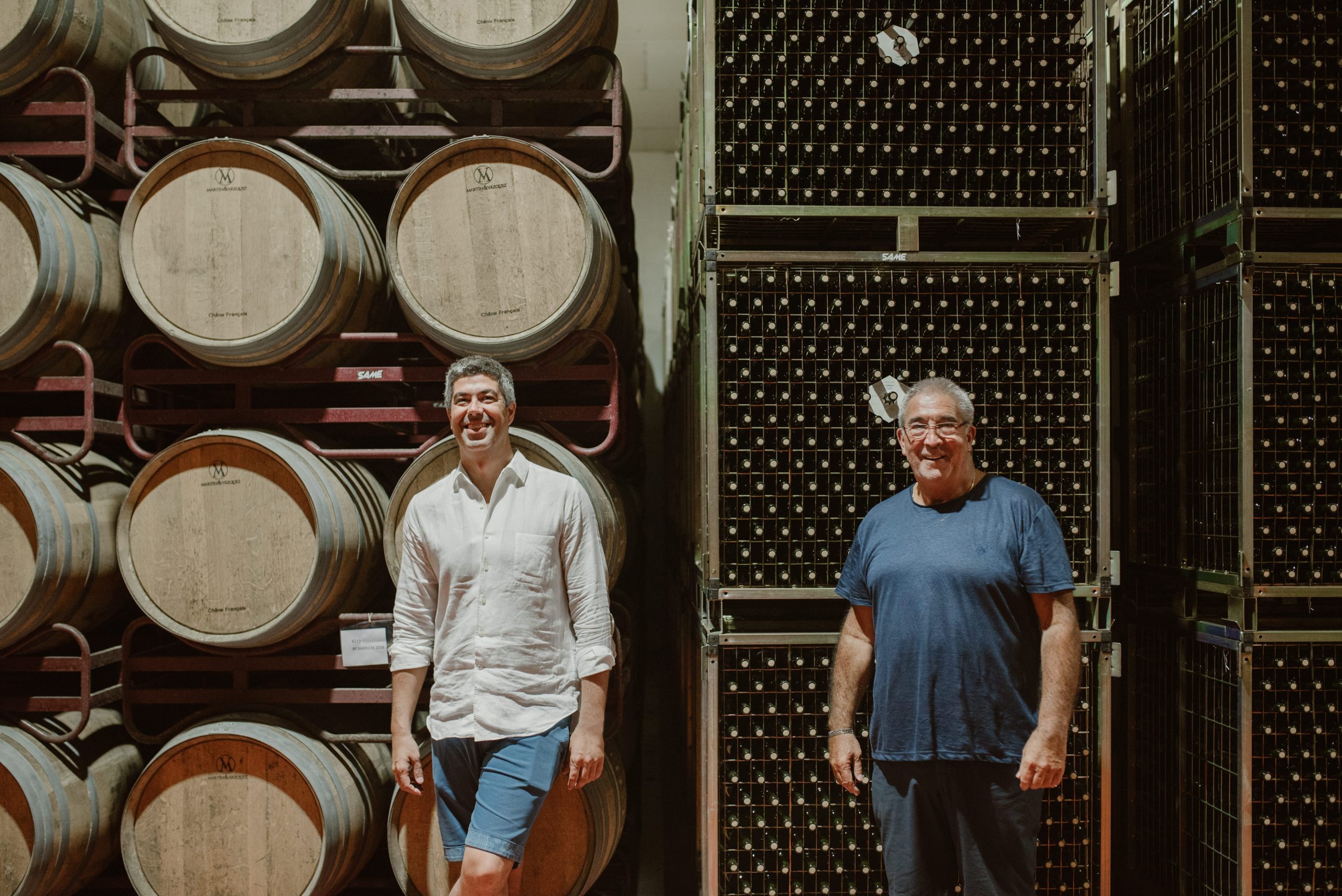The waiting game: how age-worthy can Gavi be?
Though known for its highly popular fresh, young wines, Gavi DOCG is also capable of producing bottles that benefit from time in the cellar.

The international success of Gavi should not be understated: according to the Consorzio Tutela del Gavi, of the approximately 13 million bottles of these Cortese-based white wines from south-eastern Piemonte, a staggering 85% are exported, with the UK, US, Germany and Japan being key markets.
The appeal of Gavi, and Gavi di Gavi (which must be made from grapes grown closer to the township of Gavi itself), is understandable – the wines are dry, fresh, have pleasant citrus, green apple and almond aromas, and complement a range of dishes. Their wide availability doesn’t hurt either.
But Broglia, one of the region’s leading producers (distributed by Berkmann Wine Cellars in the UK), wants to demonstrate that its wines have great potential to develop into complex, charismatic expressions of the region – you just have to exercise some patience.
In a one-on-one vertical tasting held by Azienda Vitivinicola Broglia co-owner Roberto Broglia at the producer’s La Meirana estate last week, he explained to db some of the oenological history of Gavi: “When the Republic of Genoa was the power of the Mediterranean, white wine was made because the Genoese aristocrats largely ate seafood and white meat.”
“Today,” he continued, “people’s perception of Gavi is as a fresh, easy to drink wine, which is true, but it can do more than that.”
Looking over the lineup of six wines selected to be tasted, each of which was a Gavi di Gavi made by Broglia from 100% Cortese, Broglia said: “Gavi di Gavi has high total acidity, which is great for two things: making bubbles, and age-worthy whites.”
Beyond the wine’s natural structural advantages, Broglia has another ace up its sleeves: the age of its Cortese vines, creating relatively low yields of smaller berries with a higher aromatic concentration that is more likely to stand up to the test of time. Broglia owns 70 hectares of vines spread across three valleys (it rents a further 25ha), with some parcels planted 70 years ago.
Speaking about the other advantages of using old vines beyond those for the final product, Broglia said: “There’s a natural selection, you don’t have to do a green harvest.”
Broglia also does not use oak (“we like to underline the best attributes of Gavi di Gavi,” noted Broglia, “oak would standardise Cortese”), becoming an early adopter of stainless steel tanks in the 1980s.
Beginning with the 2022 La Meirana, a wine first made by the Broglia family in 1974 (though under a different name), which spent six months on the lees undergoing weekly bâtonnage. The vines that provided the fruit have an average age of 35 years. The general consensus was that it was clean, fresh, fruity and slightly floral, but would benefit from time in the rack.
Moving back in time, we turn our attention to Bruno Broglia, which hails from a single 6ha vineyard planted in 1953 and is named in honour of the company’s founder. With the 2019, Broglia noted that “for the first time” the wine was left on the lees for three years, primarily to enhance the Gavi di Gavi’s structure rather than change its flavour. Before this point, it typically spent 18 months on the lees. That bulked out body is another attribute that will help the wine to develop down the line.
“You can taste the acidity, and a long, salty finish,” Broglia suggested of the 2019.
Indeed, that salinity is a quality that remains prominent in the older vintages of Bruno Broglia.
Tasting through the next three vintages of Bruno Broglia in our lineup, Broglia opined: “’16, ’14 and ’13 are all fresh, but each hits a different note.”
Partner Content
Of all the wines tasted, both this writer and Broglia concurred that the 2013 was showing best on the day.
“It’s just shown an incredible evolution in bottle,” Broglia argued, noting the honey and almond aromas the wine had acquired in the decade since it was vinified.
He also described it as a very “balanced” growing season, that was neither too hot nor too cold, comparing it to 2022.
“A lot of people prefer 2014 for its freshness,” he declared. “It was a difficult vintage to sell at the time, people didn’t want it, but now they want it.”
The particular 2014 tasted had notably less “minerality” (a controversial taste descriptor in the wine world) than its neighbouring vintages.
It is often stated that wine does not age in a linear fashion – it fluctuates, improving and deteriorating, and then improving again. Gavi (or Gavi di Gavi) is no exception.
“I tasted the 2016 in May,” Broglia shared, “and it was too young. It lacked complexity. But three months later, it’s much more interesting.” 2016 was a vintage noted for its warmth.
The oldest wine tasted was also the most extreme from a winemaking perspective. Vecchia Annata (quite literally translating to ‘Old Vintage’) from 2010 – a wine that spent nine years on the lees, with the three-strong cellar team subjecting it to stirring twice a week.
Broglia revealed that the wine’s creation came as a result of an appreciation for aged Gavi di Gavi: “My father and uncle decided to make Vecchia Annata because they used to enjoy drinking Bruno Broglia after many years.”
Thanks to its prolonged lees-ageing, the wine had a wonderful aroma of toasted sourdough bread, which worked very well with the other characteristics of caramel, honey and almond. The salty finish was still apparent, and there was even some of that fresh citrus and green apple profile left despite its stint sur lie.
When asked what he would pair the 2010 Vecchia Annata with, Broglia said that given its far greater complexity, it benefits from being served alongside ingredients that have either aged, or smell like they have: “Maybe with some cheese. It’s also really good with white truffles.”
As for the younger vintages tasted, Broglia cited the origins of the wine’s popularity and Genoa and suggested that they were “born to be paired with seafood”, such as spaghetti alle vongole.
Of course, as with everything, there is an upper limit when time stops giving qualities to the wine and starts taking them away. Broglia shared that the oldest vintage of the estate’s Gavi di Gavi he had tasted was a “fantastic” 1980, suggesting that it may be some time before the wines from this tasting hit an ageing ceiling.
This year’s harvest is due to start between 15 and 20 September, making Cortese, in Broglia’s words, “the last Piemontese white grape to be picked”. “Normal rainfall” and a “normal summer”, both increasingly rare qualities to find in Italy, lead him to be optimistic as to the quality of the forthcoming 2023 vintage.
Related news
Wynns John Riddoch: representing the ‘ultimate selection’




